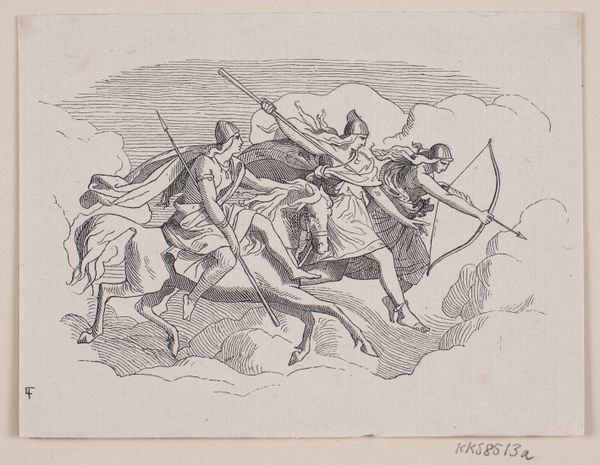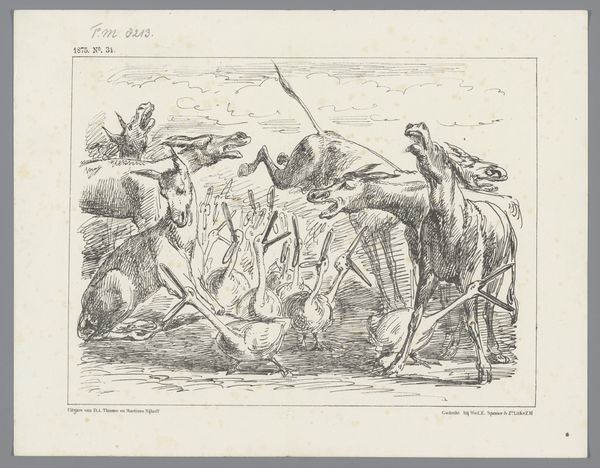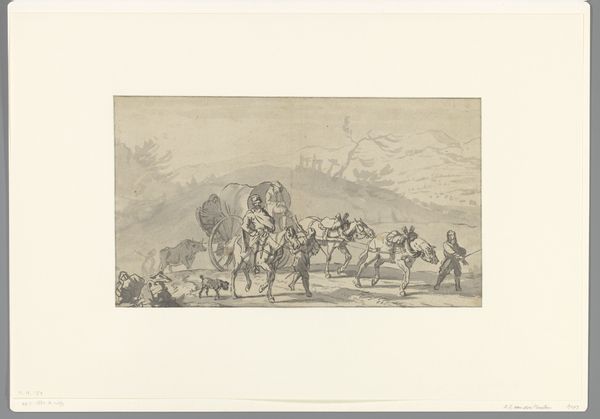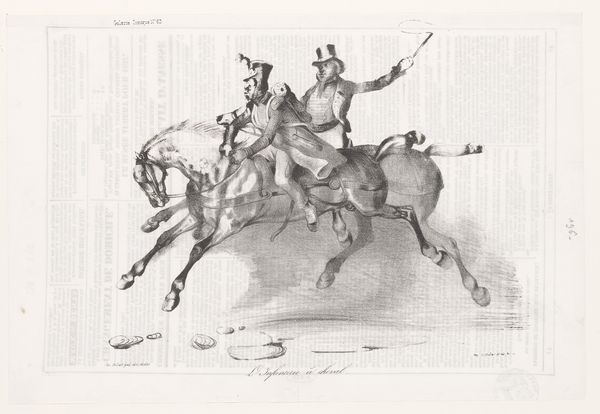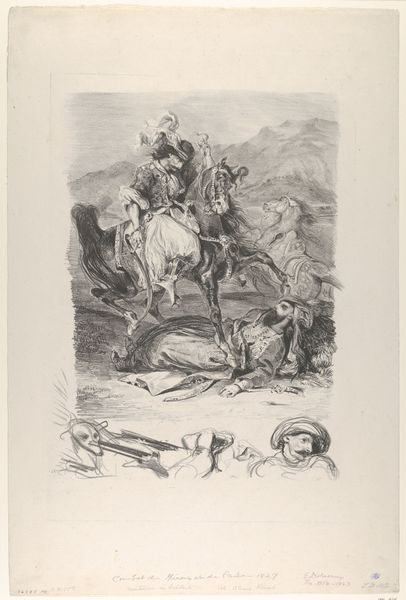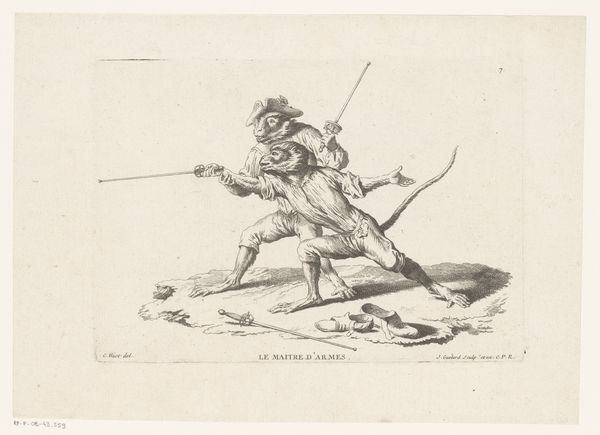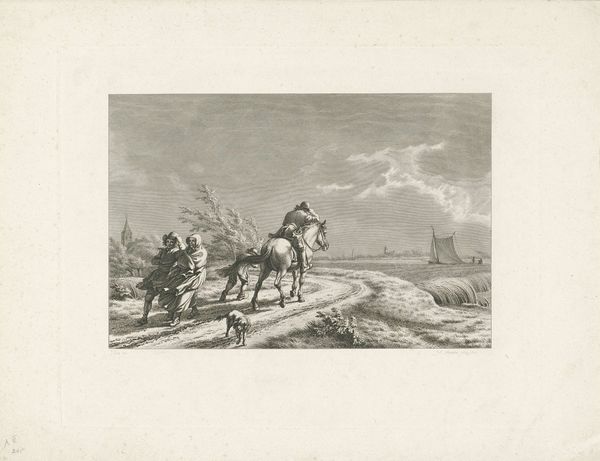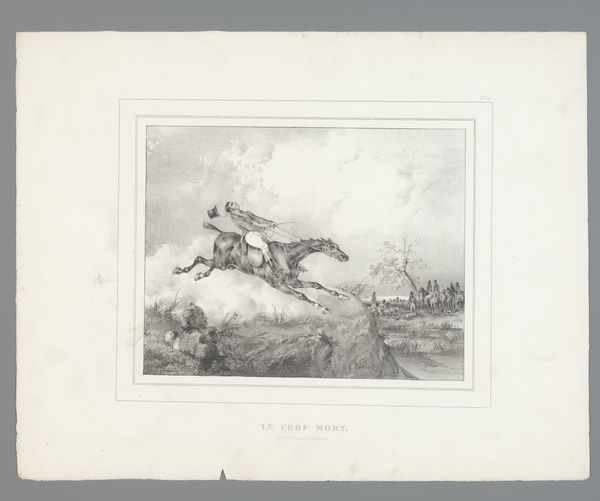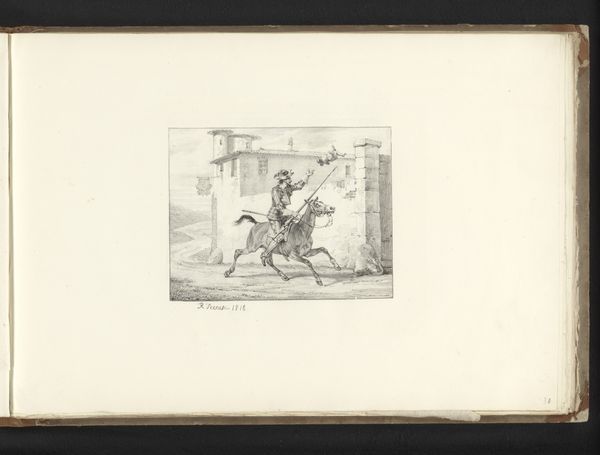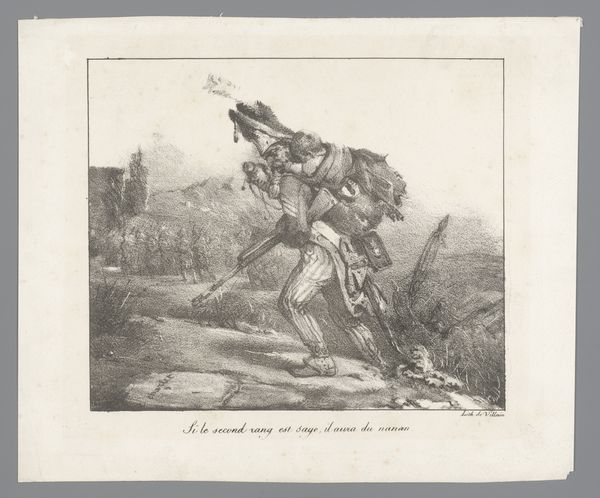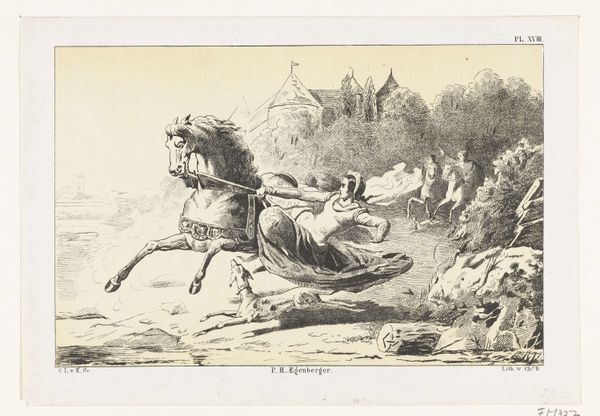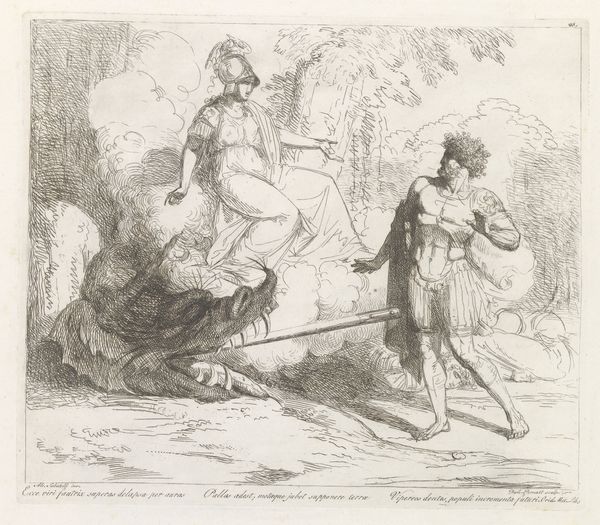
Spotprent op de verwerping van het budget van minister Van Zuylen, 1868 1867
0:00
0:00
print, engraving
#
narrative-art
# print
#
caricature
#
history-painting
#
engraving
Dimensions: height 215 mm, width 275 mm
Copyright: Rijks Museum: Open Domain
Curator: This stark engraving throws the viewer right into a dramatic jousting match. It's called "Spotprent op de verwerping van het budget van minister Van Zuylen, 1868", placing it firmly within the political landscape of that year, and was created by Johan Michaël Schmidt Crans. What's your initial read on this? Editor: It's chaotic, dynamic. The stark lines lend an immediacy, as if capturing a fleeting moment. The tilting horses, the thrust of the lances—there's a definite tension and a slightly comedic aspect conveyed by the sketchy rendering. Curator: Precisely. Let's consider the materials. It's an engraving, a printmaking process reliant on transferring images through immense pressure. It speaks to wider access; these weren’t paintings commissioned by the elite, but widely circulated critiques, responding directly to public sentiment around Van Zuylen’s budget rejection. The relative affordability of prints allowed for such political discourse. Editor: Indeed. I find the artist’s choices in composition fascinating. Look at the contrasting lines: thick versus thin, dense versus sparse. The artist uses line variation not just to delineate form but to create depth, perspective. Note the detailed treatment of the armor against the relative simplicity of the background figures—a clear visual hierarchy. Curator: Absolutely, this engraving also highlights the relationship between the artist and the publishing houses. Printmakers of the era relied heavily on contracts with these houses and the social climate of the period would greatly dictate the subjects. Here the budget, specifically relating to Foreign Affairs. What narratives were at play? And, most pressingly, to whom? Editor: I read this arena-duel symbolically. Note that one rider’s steed is clearly labeled "Opposition." We can dissect this allegorical clash on multiple levels – a rejection not simply of budget numbers but of broader policy directions. The overthrown knight signifies policy failure, visually made very graphic with that tumbling fall from his steed. Curator: Right. So the material informs us about production, distribution, the message. It pushes us to remember the networks that carried political messaging. It makes us contemplate on the value judgements surrounding skill. A formal analysis is only complete when acknowledging labour and modes of cultural access. Editor: That’s a valuable insight, highlighting the link between representation and social reality. Ultimately, though, I return to the stark, arresting impact of the piece itself: form dictates how that story is apprehended. Curator: A valuable lens for exploring social messages carried within images. Editor: Leaving a lasting impression as a well conceived print.
Comments
No comments
Be the first to comment and join the conversation on the ultimate creative platform.
